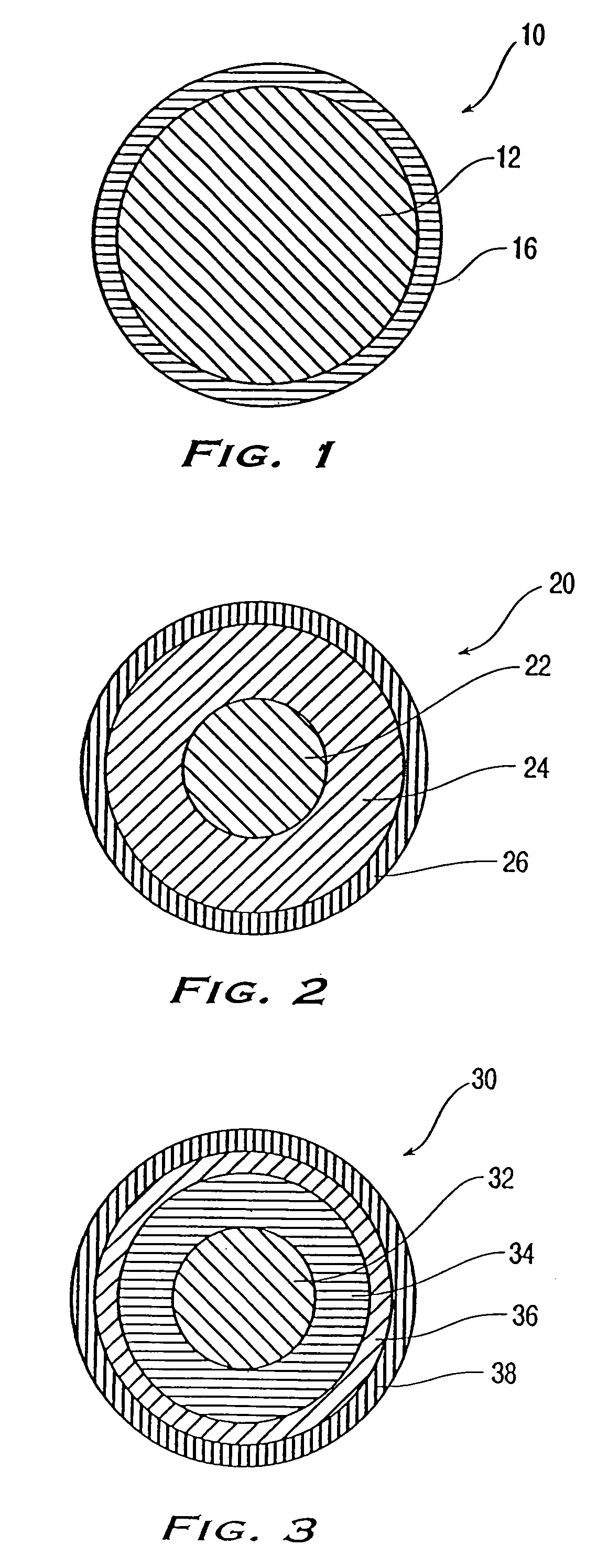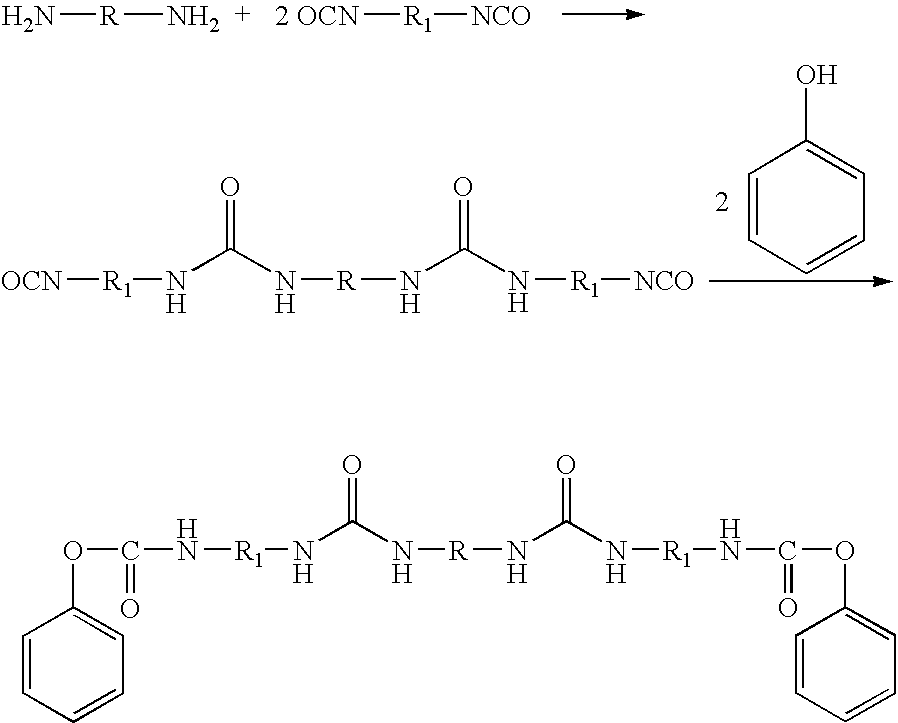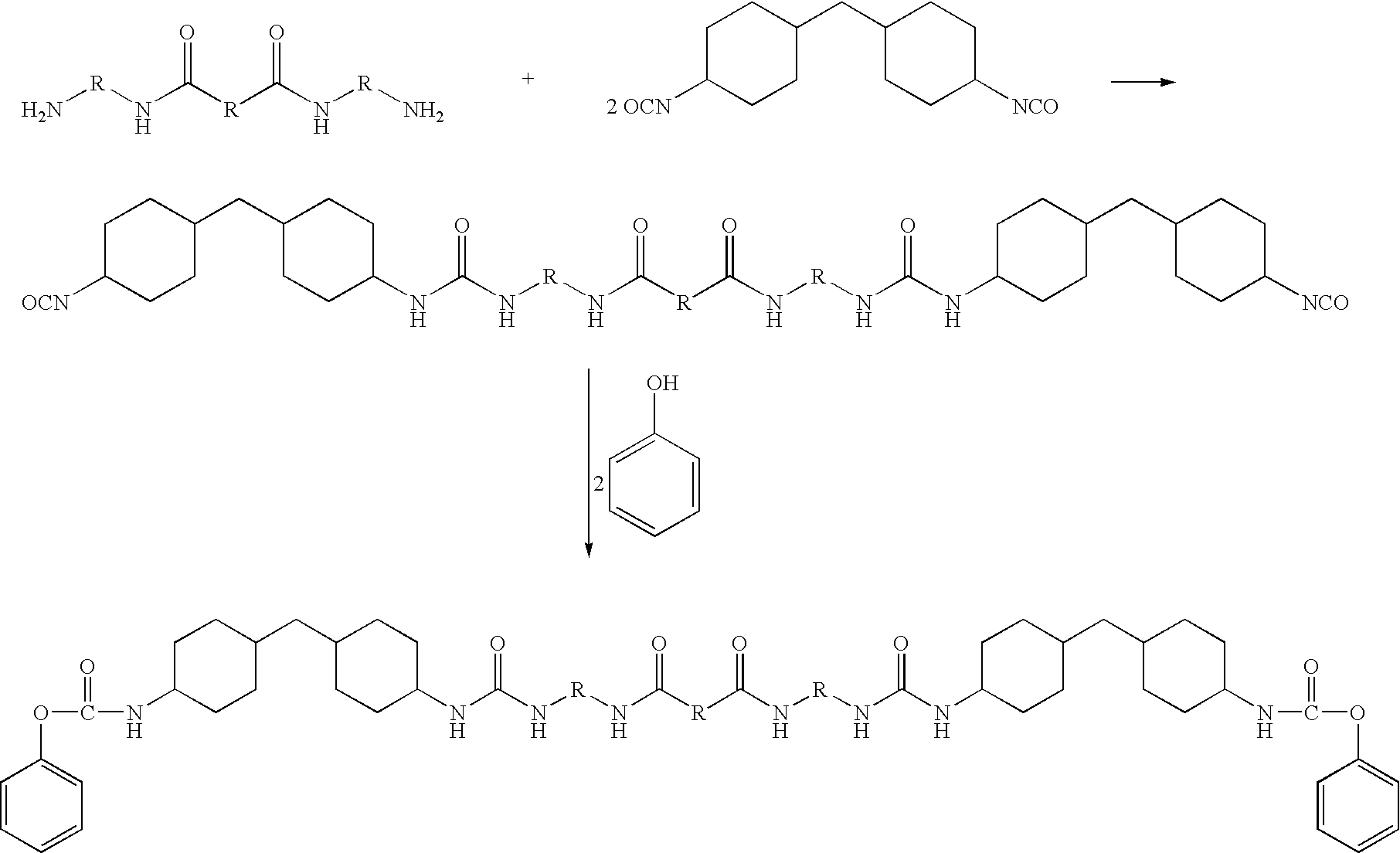Interpenetrating polymer networks using blocked polyurethane/polyurea prepolymers for golf ball layers
a technology of polymer networks and polyurethane, which is applied in the field of interpenetrating polymer networks using blocked polyurethane/polyurea prepolymers for golf ball layers, can solve the problems of poor spin and feel, easy damage of balata covered balls, and lack of durability required by the average golfer
- Summary
- Abstract
- Description
- Claims
- Application Information
AI Technical Summary
Benefits of technology
Problems solved by technology
Method used
Image
Examples
example 1
Golf Ball Having a Urethane-Epoxy IPN Present in the Cover Layer
[0292]The golf ball of Example 1 was prepared with a 1.585 inch (about 4.03 cm) wound core around a fluid-filled center. The golf ball had a finished diameter of about 1.68 inches (about 4.27 cm). The golf ball of Example 1 included an IPN of a polyurethane and an epoxy polymer, wherein the epoxy polymer component was about 5 percent of the IPN and the polyurethane component was about 95 percent of the IPN. The urethane precursor package in Example 1 included Vibrathane B-821 prepolymer, 1,4-butanediol, and T-12 dibutyltin dilaurate catalyst. The molar proportion of isocyanate groups in the Vibrathane prepolymer to hydroxyl groups in the diol was in about a 1:0.95 ratio. The epoxy precursor package included an epoxy resin (DER 331) and a BF3 catalyst / curing agent to facilitate self-polymerization and self-crosslinking to form an epoxy network. In order to limit the possibility of the polyurethane being further chain ext...
example 2
Golf Ball Having a Urethane-Polybutadiene Diacrylate IPN Present in the Cover Layer
[0295]The golf ball of Example 2 includes an IPN of a polyurethane and a polybutadiene copolymer, which is prepared with a 1.585 inch (about 4.03 cm) wound core around a fluid-filled center. Note that the IPN's disclosed in the Examples and specification herein can be used in any golf ball construction. The golf ball has a finished diameter of about 1.68 inches (about 4.27 cm). The golf ball of Example 2 includes an IPN of a polyurethane and a polybutadiene diacrylate copolymer, wherein the polybutadiene copolymer component is about 10 percent of the IPN and the polyurethane component is about 90 percent of the IPN. The urethane precursor package in Example 2 includes Vibrathane B-821 prepolymer, 1,4-butanediol, and T-12 dibutyltin dilaurate catalyst. The molar proportion of isocyanate groups in the Vibrathane prepolymer to hydroxyl groups in the diol is in about a 1:0.95 ratio. The polybutadiene diac...
example 3
Golf Ball Having a Urethane-Acrylate IPN Present in the Cover Layer
[0297]The golf ball of Example 3 is prepared with a 1.585 inch (about 4.03 cm) wound core around a fluid-filled center. Again, note that the IPN's disclosed in the Examples and specification herein can be used in any golf ball construction. The golf ball has a finished diameter of about 1.68 inches (about 4.27 cm). The golf ball of Example 3 includes an IPN of a polyurethane and an acrylate polymer, wherein the acrylate polymer component is about 10 percent of the IPN and the polyurethane component is about 90 percent of the IPN. The urethane precursor package in Example 3 includes Vibrathane B-821 prepolymer, 1,4-butanediol, and T-12 dibutyltin dilaurate catalyst. The molar proportion of isocyanate groups in the Vibrathane prepolymer to hydroxyl groups in the diol is in about a 1:0.95 ratio. The acrylate precursor package includes methyl methacrylate monomer, optionally a crosslinking agent (such as a diacrylate), a...
PUM
| Property | Measurement | Unit |
|---|---|---|
| deblocking temperature | aaaaa | aaaaa |
| flexural modulus | aaaaa | aaaaa |
| temperature | aaaaa | aaaaa |
Abstract
Description
Claims
Application Information
 Login to View More
Login to View More - R&D
- Intellectual Property
- Life Sciences
- Materials
- Tech Scout
- Unparalleled Data Quality
- Higher Quality Content
- 60% Fewer Hallucinations
Browse by: Latest US Patents, China's latest patents, Technical Efficacy Thesaurus, Application Domain, Technology Topic, Popular Technical Reports.
© 2025 PatSnap. All rights reserved.Legal|Privacy policy|Modern Slavery Act Transparency Statement|Sitemap|About US| Contact US: help@patsnap.com



